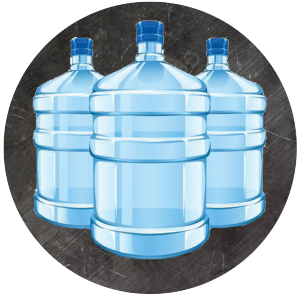We hear this time and again, so, I thought I would answer the question, “What is a dilute specimen?” In this case, dilution is the process of reducing the concentration of a drug or drug metabolites in the specimen sample. Making a sample a dilute can be done by  adding water or other fluid to the specimen. It can also be diluted by what is called “internal dilution” which is defined when someone drinks large amounts of fluids, especially water, before their drug test. All drug testing laboratories continue to test samples routinely to detect dilution. Dilutions should never be confused with adulteration. Adulteration is where a donor will add a substance to the specimen in hopes of gaining a negative or dilute report from the test. There are many products on the market that are intended to be taken orally and almost all of them require you to consume massive amounts of water with them. It’s no secret that consuming massive amounts of liquids will make you urinate more and ultimately produce dilute test results. This is why it is a great idea to have your Drug-Free Workplace Policy address how to handle dilute specimens. At NATSB, we require immediate re-screening for that individual and would recommend you do the same.
adding water or other fluid to the specimen. It can also be diluted by what is called “internal dilution” which is defined when someone drinks large amounts of fluids, especially water, before their drug test. All drug testing laboratories continue to test samples routinely to detect dilution. Dilutions should never be confused with adulteration. Adulteration is where a donor will add a substance to the specimen in hopes of gaining a negative or dilute report from the test. There are many products on the market that are intended to be taken orally and almost all of them require you to consume massive amounts of water with them. It’s no secret that consuming massive amounts of liquids will make you urinate more and ultimately produce dilute test results. This is why it is a great idea to have your Drug-Free Workplace Policy address how to handle dilute specimens. At NATSB, we require immediate re-screening for that individual and would recommend you do the same.
DOT TESTING of DILUTES
When DOT testing if the creatinine level is greater then 5mg/dl and less then 20 mg/dl, the employer can require the applicant to submit another specimen. The second specimen taken CANNOT be done under direct observation and with all re-collections, the donor must be treated the same as before. The employer, however, may treat different types of tests differently. For example, they may elect to re-collect for pre-employment tests but not choose to for random tests and so forth. If the re-collected test turns out to be a negative dilute, the company must accept this test result and MUST NOT continue to re-collect. The second test is the collection of record. Under the DOT rule, if the employee refuses to submit a sample for the second collection, this is considered a refusal to test.
So if you hear of employees discussing “body cleansing,” you may be assured that the drug culture has penetrated your workplace. People in the drug culture shop around for companies that they know do not have a drug-free workplace program in place. While pre-employment screening is good and may deter some drug users from applying at your company, it will not deter them all. They will clean up for a week or two, pass the pre-employment drug screen and begin using again once in the workforce. So what do you do? You must have a drug-free workplace program that includes an in depth policy on drug screening, pre-employment screening, random screening, supervisor training and employee training. The supervisor training should meet the DOT standard requirements of two hours and cover such topics as signs and symptoms screening processes and documentation of events. If you would like to know more about how to make your company a drug-free workplace, please contact Troy Trussell at NATSB.

